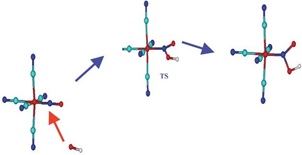Coordination Chemistry of Nitric Oxide and Biological Signaling
REVIEW
Abstract
Nitric Oxide (NO) is a key intermediate in the nitrogen redox cycles that operate in soils, water and biological fluids, affording reversible interconversions between nitrates to ammonia and vice-versa. The discovery of its biosynthesis in mammals for signaling purposes generated a research explosion on the ongoing chemistry occurring in specific cellular compartments, centered on NO reactivity toward O2, thiols, amines, and transition metals, as well as derivatives thereof. The present review deals with the coordination chemistry of NO toward selected iron and ruthenium centers. We place specific attention to the three redox states of the nitrosyl group: NO+, NO and NO–/HNO, describing changes in structure and reactivity as coordination takes place. Noteworthy are the results with the most reduced nitroxyl-species that allow establishing the changes in the measurable pKa values for the HNO-bound complexes, also revealing the abrupt decrease in reducing power and trans-releasing abilities of the protonated species over the unprotonated ones, NO–. Comparative results using non-heme and heme proteins and models prove useful for suggesting further improvements in the current research status of complex enzymatic behavior.


